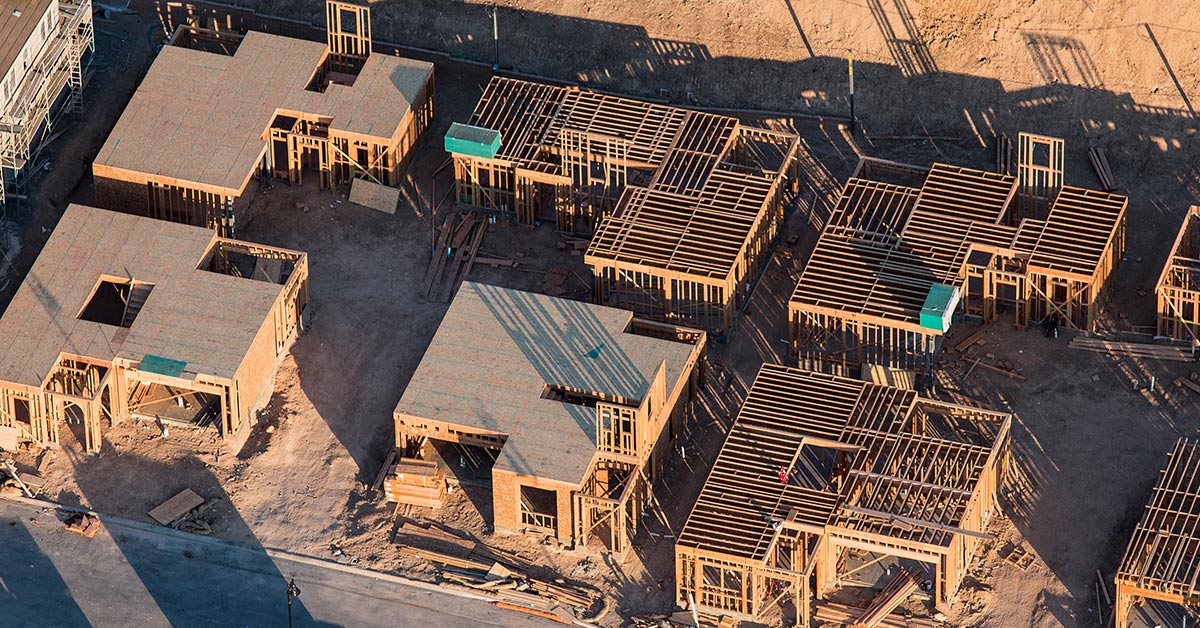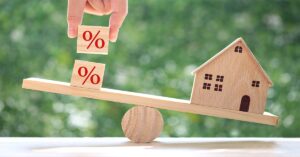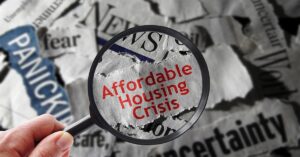At the end of 2020, millions of Americans remained out of work and a second tragic wave of COVID-19 cases was hitting the U.S. But, remarkably, the housing market remained stable.
Far from crushing demand for homes and pushing homebuilding projects into a long winter of dormancy, home prices and sales were strong. In essence, the housing market was back to the same spot it was pre-pandemic. Homebuyers and Realtors, however, face 2021 with a lingering problem: There aren’t enough homes for sale.
“Not only is there still a shortage, we now have the lowest supply on both the new-and existing-home market ever recorded,” says Ali Wolf, chief economist for Zonda. “So, the shortage is getting even worse.”
In the booming economy prior to the pandemic, housing economists and trade groups tended to blame the housing shortage and escalating prices on the pace of new-home construction. The National Association of Home Builders (NAHB) estimates that U.S. builders need to produce roughly 1.2 million new single-family homes each year to replace out-of-date housing stock and meet demand from new household formations.
Throughout the past decade, however, housing starts didn’t keep pace with this target. Since 2007, the U.S. Census Bureau estimates that single-family home starts ranged from a low of 431,000 in 2011 to a high of 888,000 in 2019.
Last year, builders slowed down after the emergence of COVID-19 in the spring. The yearly pace of single-family housing starts ranged from 679,000 in April to 992,000 in July, census data suggests. As a result, less than 1 million single-unit homes were expected to be built for a 13th year in a row.
“At the end of the summer, we had the largest-ever gap between sales and current construction volume,” NAHB chief economist Robert Dietz says. “So, construction is going to have to play some catch-up as we move into 2021.”
Even as the pandemic was claiming more than 2,000 American lives per day this past December and a new round of state shutdowns loomed over the economy, the signs were pointing to 2021 being the strongest year since 2007 for the homebuilding industry. Builder confidence, for example, was at a record level this past fall, driven by unexpectedly strong demand from homebuyers, the persistent lack of inventory and historically low interest rates that were encouraging buyers.
At the end of the summer, we had the largest-ever gap between sales and current construction volume.
Robert Dietz, chief economist, National Association of Home Builders
Money also was readily available to finance new-home construction projects. Nationwide, there were 28,707 construction loans in third-quarter 2020 for single-family homes, condominiums and dwellings with fewer than five units, according to Attom Data Solutions. That was down about 9% year over year, although this type of lending activity picked up considerably after bottoming out in the second quarter.
Paul Rahimian, CEO of Parkview Financial, says that most home-construction lenders were active by the summer when it became clear that homebuying demand wasn’t going to be squashed by the pandemic. He says that some of his competitors have stayed away from residential construction financing, but he expects them to come back in 2021.
“When the pandemic first hit, there was a lot of concern in the industry and the marketplace that these [projects] would be affected, especially the high-end homes,” Rahimian says. “The opposite has happened. Prices have gone up.”
Construction financing, Rahimian says, has the advantage of time. Many of these homes are completed 12 to 18 months after the loan closes. So, many of the construction loans that will be approved this year are funding new homes that will be occupied in a post-pandemic economy. Thus, the typical construction lender is still comfortable financing a single-home project or a new development with several single-family homes.
Rahimian also says that lenders are aware of the market risks and un-certainty. “We have our concerns, but we think, with the vaccine coming, the worst has passed us,” he says. “There is going to be a stimulus package at the beginning of the year with the new [presidential] administration. We feel that the economy should withstand this stress pretty well.”
Buoyed by October 2020 census data showing that single-family starts were at the fastest pace since 2007, NAHB projected that more than 1 million new single-family homes will be built in 2021. Low interest rates, as well as a recent pandemic-induced flight to the suburbs and work-from-home trends, continue to fuel demand for home purchases.
In terms of supplying the need, however, the homebuilding industry faces many of the same problems that held it back when the economy was booming, Dietz says. These include lumber costs, available building lots and a severe shortage of construction workers. These same issues could ultimately widen the supply gap even further.
Author
-

Victor Whitman is a contributing writer for Scotsman Guide and a former editor of the publication’s commercial magazine.
View all posts





